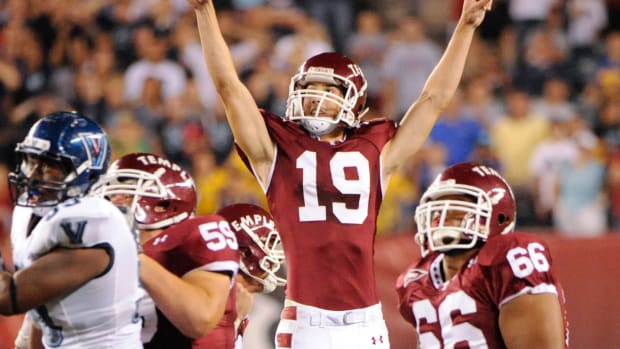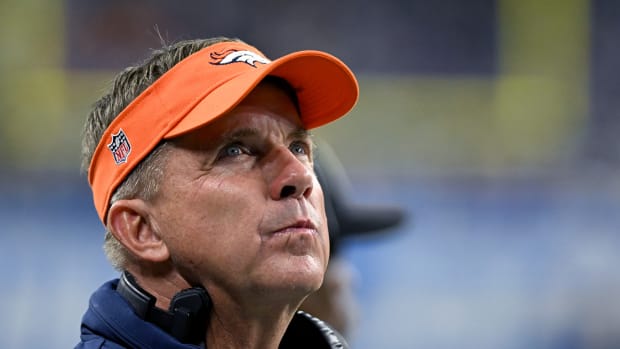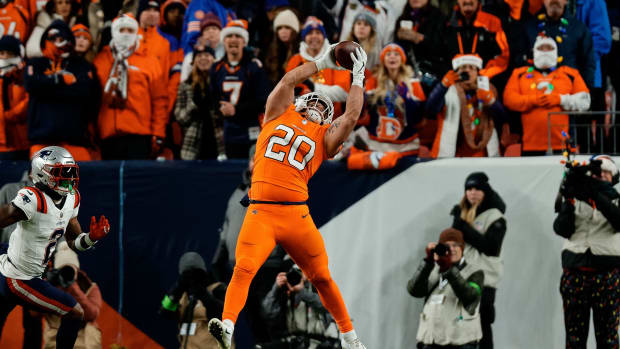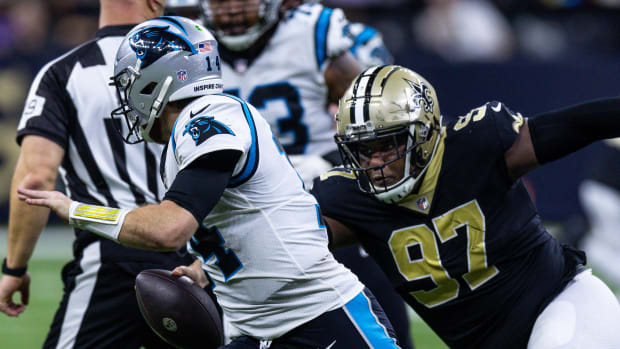Analytics Suggest Broncos Shouldn't Trade any of Their Arsenal of Draft Picks
The Denver Broncos enter the 2020 NFL Draft season with a slew of draft picks in their arsenal. The Broncos currently own nine selections, including three in the third round.
In March, the team will know its compensatory draft pick fate when the NFL reveals how they will award those additional selections. By all projections, the Broncos are in line for three compensatory picks to increase their payload to a grand total of 12.
That is significant draft capital. With that firepower, the Broncos have the leverage to make many moves on draft day if they deem it necessary. Denver can trade some of those picks and go after targeted players early.
That is the sexy philosophy. The less exciting philosophy would be to simply let the board fall as it may and use all 12 picks. The past 10 NFL drafts indicate the smart play is to go down the boring path and use them all. The following analysis will illustrate why.
Before we dive into the analysis, we must first understand a significant metric; performance value. This value is used to indicate how well players who were drafted performed on the field in comparison to other players who weren't. More specifically, compared to other players at their same position. I am using Pro Football Reference’s Car AV value to indicate that performance.
You may not agree with how PFR derives their Car AV, but they use the same methodology for each player. The importance of this is consistency.
By applying their computation equally to each player, their Car AV can be used to compare players, especially when comparing players to others at the same position. It removes ambiguity and begins the analysis on equal footing.
For this deep-dive, I used a player’s Car AV per season played. This normalizes the value so that longevity is not the driving factor. Also, by doing this, missed seasons due to injury are part of the equation.
After all, you know what they say; 'availability is the best ability'. Next, a player’s Car AV per season is compared to the average for all drafted players at their position. A successful pick or a player a team 'hits' on, is based on this performance value being at least better than average for the player’s position.
As a side note, success in the draft doesn’t necessarily equate to team success when it comes to winning. So many other factors contribute to winning or losing.
Why Using as Many Draft Picks as Possible is Preferrable
With that out of the way, the big question now is; why is it important for the Broncos to make as many selections as possible in the draft? Simply put, the draft is a gamble and the more times you roll the dice, the better chance you have on hitting it big.
Secondly, no team has a roster of 53 elite players. It is an impossibility with the salary cap. What teams need is a bevy of solid role players and starters with some elite players to round out the team. That stable of role players needs to be filled out each year with the draft.
Even if a team could have a roster full of elite players, drafting said players is quite hard. Actually, it is near impossible. Since 2010, there have been 2,544 players drafted and only 36 (1.4%) have a performance value four times better than the average of their position.
These are the elite of the elite at their position. 36 players shakes out to barely one player for each of the 32 NFL teams over the last 10 years. Not each year, only one for the past decade per team.
Even if you look at players who have a performance value three times better than the average, you will only find 88 (3.5%) players. These are players who are stars at their position. 88 doesn't even three per team over the decade. It is not quite equivalent to finding a needle in a haystack, but close.
To break that down two steps further
306 (12%) players drafted have been two times better than average for their position. These are starters or solid role players. Only 12% of the players drafted have turned into starters or solid role players. Think about that.
584 (23%) players drafted are just above average for their position. These are role players, backups or spot starters who are typically on the verge of being replaced by a new crop of draftees.
Again, drafting an elite player is nearly impossible and drafting the right players, in general, is not an easy task.
I can hear the grumblings now. People will say, “Well if you have a good GM and scouting department, you will come away with elite players in every draft.”
Let’s examine that point of contention. To wit, since 2010, the team with the most success drafting players who have a performance value at least above average is the Jacksonville Jaguars. They have a success rate of 48.6%.
The best drafting team has a 'hit' on less than 50% of their draftees! Think about that for a moment. You have a better chance of being correct on a coin flip.
The worst has been the Cincinnati Bengals at 32.3%. There is definitely a distinction between the best drafting team and the worst drafting team, but neither are incredibly successful. Furthermore, most teams hover around the 40% success rate.
Drafting successfully over time is a difficult process. However, by having more selections at a team’s disposal, the better chance the team has at landing players who can contribute.
Compare the Seattle Seahawks to the Chicago Bears. The Bears have 'hit' on 41.9% of their players which is better than the Seahawks' 36.1% success rate, but look at how many players Seattle has drafted.
The Bears have taken a total of 62 players and the Seahawks have selected 97. Meaning the Seahawks have drafted nine more players who have contributed, even with the lower success rate. What that means is, if you want to fill out a roster, the more players you take a chance on, the better your odds become.
Compare the same thing with the New England Patriots and the New Orleans Saints. Each has nearly equal success rates, but the Patriots have selected 26 more players and have 10 more 'hits' than the Saints. It’s a war of attrition, so to speak.
Continue with this process with players drafted who perform at least two times better than average, three times better than average, and four times better than average. The best drafting teams' 'hit' rates are 25.7%, 10.2%, and 5.4%, respectively. Again, drafting stars and elite players is an incredibly difficult proposition.
Furthermore, even in the first round, there have been no teams that have drafted players at least two times above the average at a 100% rate. In the round that is a must for teams to get at least a starter, they miss.
Finding stars in the first round is even harder. The best team for drafting players at least three times better than average in the first round has a 'hit' rate of just 55.6%. Barely better than a coin flip.
That being said, most stars or elite players do come from the first round. It is imperative that the Broncos get that first-round selection correct.
However, the teams that have the selected the most players who have a performance value at least three times greater than the average (Saints, Cowboys, Chiefs, Seahawks, and 49ers) have found many on day two and three of the draft. The Seahawks, Chiefs, and 49ers have more stars from rounds two through five than they do from the first round. Meaning, the Broncos must go to the well as often as possible through the draft rounds to find those star players.
Drafting NFL-caliber players is a difficult task, to say the least. The Broncos would be wise to use as many of the draft selections in their possession as possible if they want to increase their chances of finding their next star player and provide the depth needed to last through a grueling 16-game season.
Follow Thomas on Twitter @ThomasHallNFL and @MileHighHuddle.






